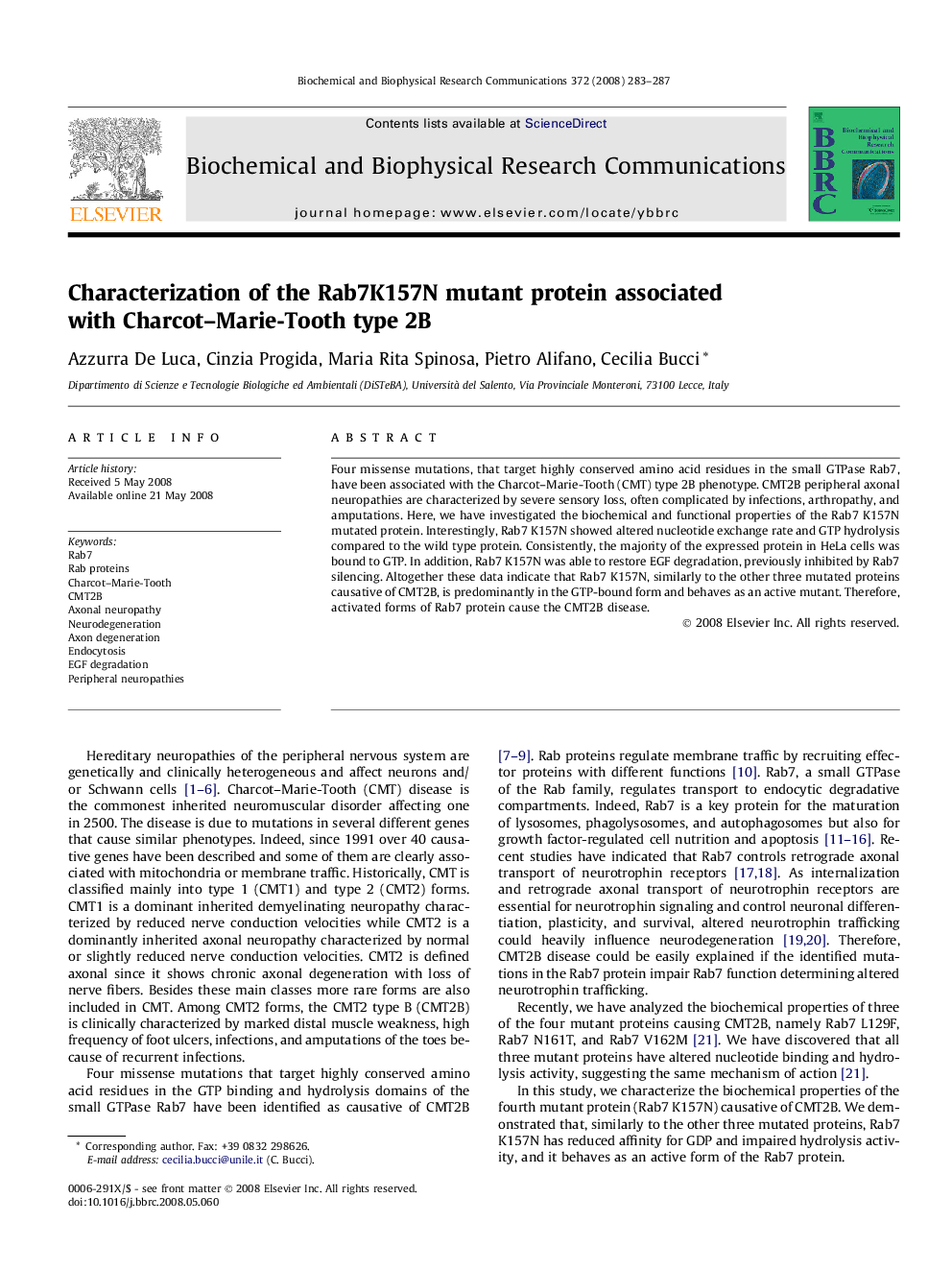| Article ID | Journal | Published Year | Pages | File Type |
|---|---|---|---|---|
| 1935471 | Biochemical and Biophysical Research Communications | 2008 | 5 Pages |
Four missense mutations, that target highly conserved amino acid residues in the small GTPase Rab7, have been associated with the Charcot–Marie-Tooth (CMT) type 2B phenotype. CMT2B peripheral axonal neuropathies are characterized by severe sensory loss, often complicated by infections, arthropathy, and amputations. Here, we have investigated the biochemical and functional properties of the Rab7 K157N mutated protein. Interestingly, Rab7 K157N showed altered nucleotide exchange rate and GTP hydrolysis compared to the wild type protein. Consistently, the majority of the expressed protein in HeLa cells was bound to GTP. In addition, Rab7 K157N was able to restore EGF degradation, previously inhibited by Rab7 silencing. Altogether these data indicate that Rab7 K157N, similarly to the other three mutated proteins causative of CMT2B, is predominantly in the GTP-bound form and behaves as an active mutant. Therefore, activated forms of Rab7 protein cause the CMT2B disease.
